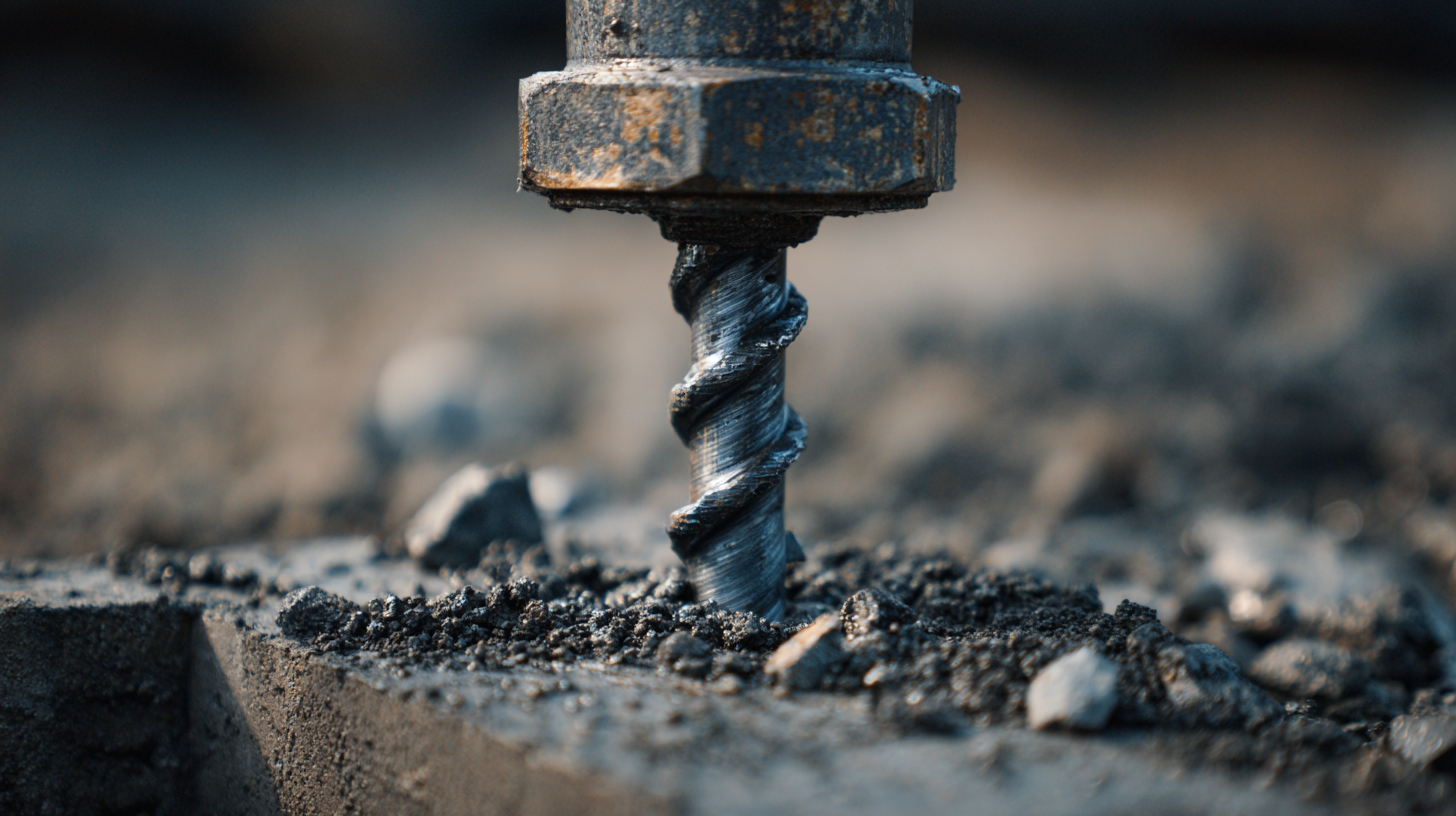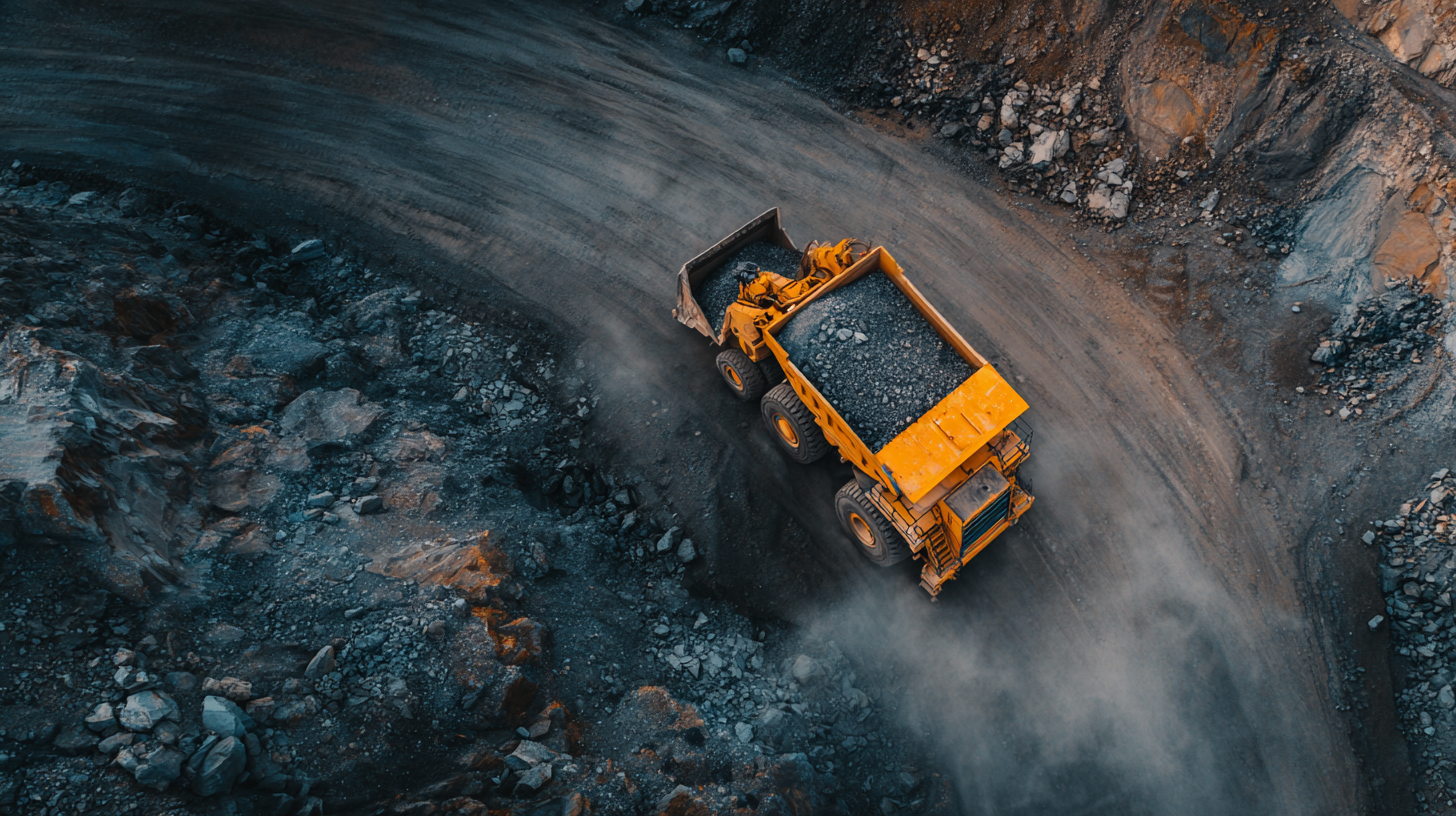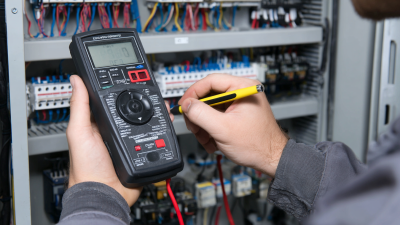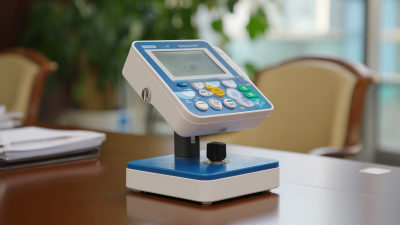Exploring the Role of Impact Equipment in Sustainable Construction Practices
The construction industry is undergoing a significant transformation towards sustainable practices, driven by the urgent need to minimize environmental impact and improve resource efficiency. According to a recent report by the Global Reporting Initiative, sustainable construction can reduce carbon emissions by up to 50% when integrated with innovative technologies and materials. A critical component of this evolution is the incorporation of impact equipment, which enhances efficiency while adhering to sustainability standards. For instance, the use of advanced impact tools not only optimizes construction processes but also supports waste reduction and energy conservation initiatives.

As the industry moves towards meeting global sustainability targets set by organizations like the United Nations, understanding the role of impact equipment becomes essential for stakeholders aiming to implement best practices in sustainable construction. This exploration seeks to highlight how impact equipment is instrumental in bridging the gap between traditional construction methods and forward-thinking sustainable practices.
Understanding Impact Equipment: Definition and Importance in Sustainable Construction
Impact equipment plays a crucial role in promoting sustainable construction practices, especially in the management of high-end office buildings that define a city's identity. These iconic structures not only serve as offices but also symbolize the innovation and ecological responsibility of urban environments. According to industry reports, transitioning to sustainable construction methods can reduce operational energy costs by up to 30% and significantly lower carbon emissions associated with traditional building practices.
Effective property management in high-rise buildings must prioritize the integration of impact equipment that enhances sustainability. This involves selecting materials and machinery that minimize waste and maximize efficiency. For example, using advanced impact equipment like electric-powered machinery can not only improve work efficiency but also contribute to a cleaner urban atmosphere by reducing noise pollution and emissions.
**Tips:**
- Regularly assess and update operational protocols to incorporate the latest sustainable practices in property management.
- Invest in training for staff to understand the benefits and usage of impact equipment in reducing the building's environmental footprint.
- Collaborate with contractors who are committed to sustainable construction to ensure that all phases of building management are aligned with eco-friendly goals.
Exploring the Role of Impact Equipment in Sustainable Construction Practices
| Impact Equipment Type | Definition | Importance in Sustainable Construction | Examples of Use |
|---|---|---|---|
| Impact Hammers | Tools that deliver a sudden force or impact to drive materials | Helps in efficient material use and reduces waste | Used in piling work for foundations |
| Concrete Vibrators | Equipment that uses vibration to settle concrete | Improves concrete density and reduces cracks contributing to longevity | Applied in slab constructions |
| Compactors | Machinery that increases soil density | Prevents soil erosion and contributes to stability | Used in roadbed and landscaping projects |
| Scaffolding Systems | Temporary structures for supporting work crews | Enhances worker safety and access without extensive earth disruption | Utilized in tall building construction |
Evaluating the Environmental Benefits of Utilizing Impact Equipment in Building Projects
The use of impact equipment in construction has gained significant traction as the industry pivots toward more sustainable practices. According to a report by the International Energy Agency (IEA), the construction sector accounts for nearly 39% of global carbon emissions, with equipment operation contributing substantially to this figure. By adopting impact equipment, such as hydraulic hammers and pile drivers designed for energy efficiency, projects can significantly minimize emissions. Studies show that these tools can reduce energy consumption by up to 30%, which translates to a considerable decrease in the associated carbon footprint during construction phases.
Moreover, the environmental benefits extend beyond just emissions. A study conducted by McKinsey & Company highlights that using impact equipment can enhance resource efficiency in building projects. For instance, precision in demolition and site preparation minimizes material wastage by an estimated 20-25%. This translates into reduced demand for new raw materials, less landfill use, and lower overall costs for developers. As the construction industry increasingly embraces these innovative tools, the alignment with sustainable development goals becomes clearer, showcasing a viable path towards more environmentally responsible building practices.
Key Innovations in Impact Equipment that Enhance Sustainability in Construction
The integration of innovative impact equipment in construction plays a pivotal role in advancing sustainable practices within the industry. Recent studies indicate that the adoption of advanced impact tools can reduce energy consumption by up to 30%, significantly lowering the carbon footprint associated with traditional construction methods. For instance, new vibration equipment and hydraulic breakers not only improve efficiency but also minimize noise pollution and material waste, thus promoting a healthier construction site environment. According to the Global Construction Industry Report 2023, sustainable construction techniques will save the industry an estimated $50 billion over the next five years.
Tips: When selecting impact equipment, consider models that are energy-efficient and feature automated controls. This not only enhances productivity but also ensures compliance with increasingly stringent environmental regulations.
Innovations such as electric-powered impact tools and eco-friendly materials are also gaining traction. These technologies further enhance sustainability by reducing reliance on fossil fuels, with electric units capable of offering a 60% reduction in emissions compared to their diesel counterparts. Moreover, manufacturers are developing impact equipment with recyclability in mind, ensuring that machinery can be repurposed at the end of its lifecycle. As reported by the Construction Equipment Association, by 2025, 70% of construction equipment is expected to integrate smart technology, paving the way for even greener practices in the face of a rapidly changing climate.
Tips: Engage with suppliers who prioritize sustainable practices in their equipment offerings, ensuring you're contributing to a greener future for the construction industry.
Best Practices for Integrating Impact Equipment into Eco-Friendly Construction Methods
The integration of impact equipment into sustainable construction practices is increasingly vital as the global focus shifts toward zero-carbon emissions and environmental, social, and governance (ESG) goals. Modern smart buildings effectively utilize advanced management systems to optimize energy efficiency, laying the groundwork for smart city initiatives. Leveraging impact equipment can further enhance these green strategies by enabling streamlined processes that reduce resource consumption and waste generation.
As evidenced by market research, the modular construction market is projected to grow significantly, estimating a worth of $136.59 billion by 2024 and potentially reaching $219.24 billion by 2033. This growth highlights the industry’s shift toward efficient construction methods that minimize environmental impact. The adoption of impact equipment in modular building not only facilitates quicker assembly but also supports sustainable material usage, thereby enhancing overall project efficiency. With pioneering techniques and materials becoming more readily available, the role of impact equipment becomes crucial in fostering an eco-friendly construction landscape.

Future Trends: The Evolving Role of Impact Equipment in Sustainable Construction Practices
The future of sustainable construction is increasingly intertwined with the technological advancements in impact equipment. As the industry strives to minimize carbon footprints, the integration of innovative machinery has become essential. According to a recent report by the Global Construction Equipment Market, the demand for high-efficiency impact tools is projected to grow by 5.4% annually through 2028, driven by the need for speed and precision in construction processes while maintaining eco-friendly practices.

Impact equipment, such as electric and hybrid machinery, plays a pivotal role in reducing emissions and promoting energy efficiency. A study by the McKinsey Global Institute indicates that by implementing advanced impact equipment, construction operations can cut energy costs by up to 30%, aligning with the industry's goal to achieve carbon neutrality by 2050. Moreover, the rise of intelligent machinery equipped with AI and IoT capabilities is revolutionizing project management, allowing for real-time data analysis, which optimizes resource allocation and waste reduction in construction sites.
As construction techniques evolve, the focus on sustainable impact equipment enhances not only operational efficiency but also regulatory compliance. The adoption of these technologies can aid companies in meeting the criteria set by environmental policies, ensuring that their projects not only fulfill practical requirements but also contribute positively to larger sustainability goals. Continuous innovation will undoubtedly shape the landscape of eco-conscious construction practices in the years to come.
Related Posts
-

The Ultimate Guide to Choosing the Best Quality Testing Equipment for Your Business
-

Ultimate Guide to Choosing the Best Ball Rebound Tester for Your Needs
-

5 Reasons Why the Tester Line is the Best Choice for Your Production Needs
-

Understanding the Importance of Accurate Meter Test Equipment for Efficient Energy Management
-

Water Testing Meter Innovations and Market Trends at the 138th Canton Fair in 2025
-

Innovative Solutions for Precision Line Testers





